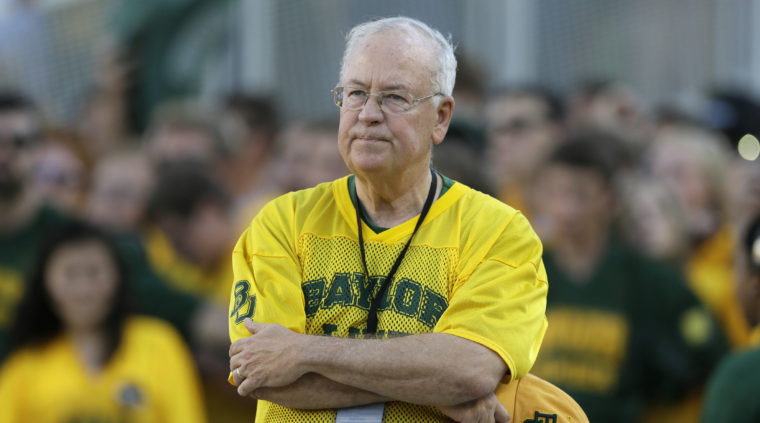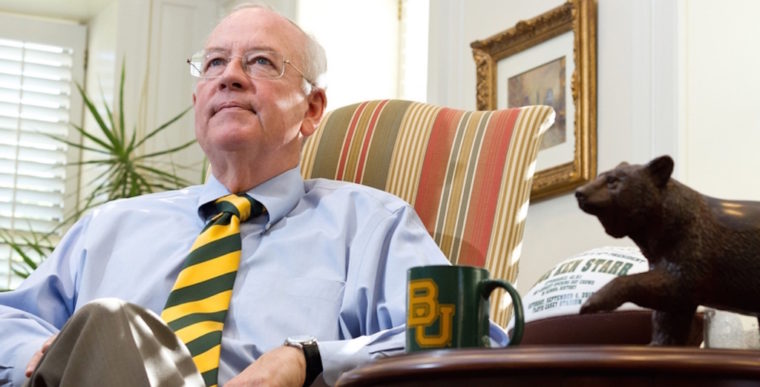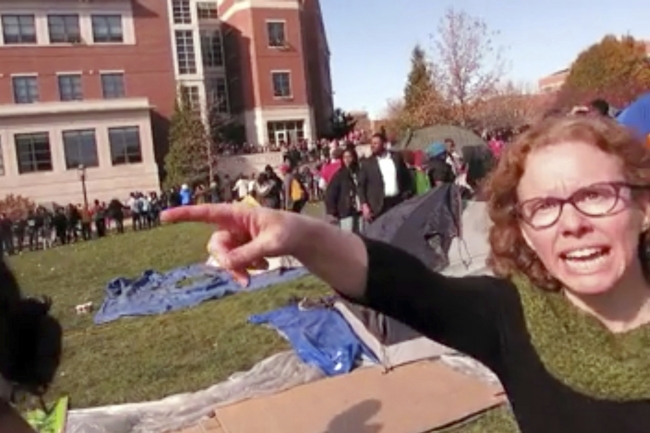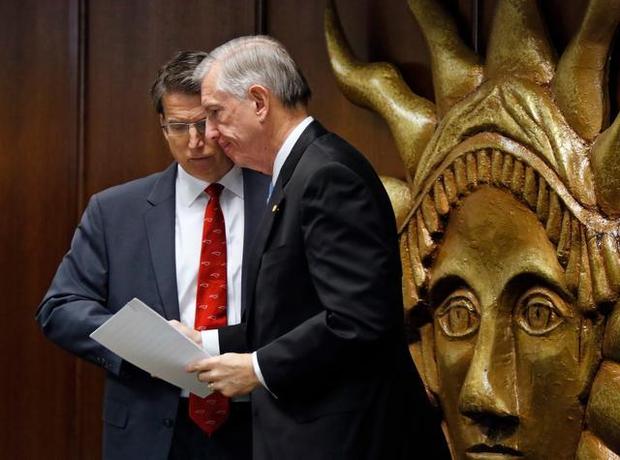We know that being a college president is a difficult job. Presidents must serve as administrative leaders, prolific fundraisers, and provide vision for the institution. Along with two of my graduate students, Molly Ellis and Brittany Barker, I have been interested in developing a better empirical understanding of why presidents leave office. We presented this work at the Association for the Study of Higher Education annual meeting and the Chronicle of Higher Education provided a nice discussion of our work that I would like to share with you.
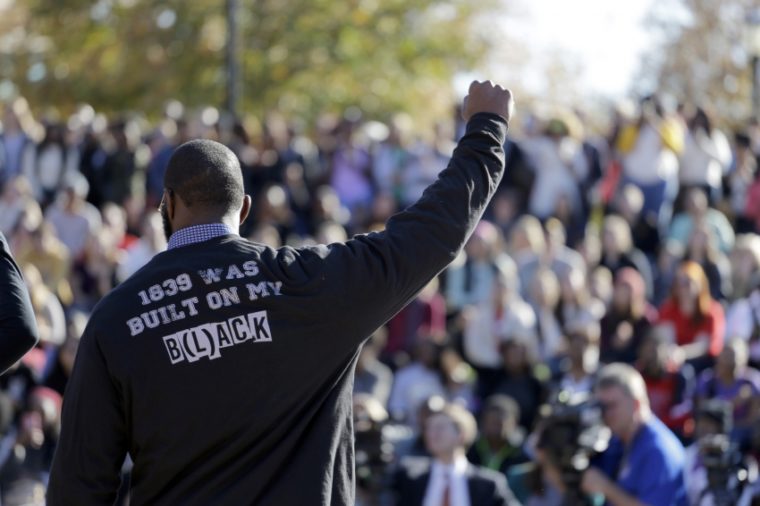
Photo credit: The Chronicle of Higher Education
Why University Chiefs Head Out The Door
By Peter Schmidt, Chronicle of Higher Education
Major university presidents’ risk of being removed from office has surged in recent years, but the factors determining the length of their tenure are not always what people in academe assume, according to new research.
One new study, an examination of 25 years’ worth of records dealing with university presidents’ departures, found that the share of leaders who left involuntarily rose substantially after 2007, for reasons not always attributable to the economic crisis spawned then.
A second study, an analysis of the circumstances surrounding public university presidents’ retirements or job changes, found that working for large governing boards or for Republican governors tended to shorten tenures. Contrary to what the study’s authors had hypothesized, however, leaders hired from outside their institutions — or even outside academe — generally remained in office longer than those promoted from jobs within their institutions.
The two studies, presented Thursday at the annual conference of the Association for the Study of Higher Education, provide new evidence that the task of running a college has become more difficult as a result of broader trends in the field such as growing competitive pressures.
“We all know that the presidency of colleges and universities is becoming more complex,” says Lynn M. Gangone, who, as vice president for leadership programs for the American Council on Education, has watched many well-intentioned presidents lose support on campus as their institution confronts some crisis.
“An awful lot of presidents who are stepping down are doing so under pressure that is not visible to the public at large,” says Stephen Joel Trachtenberg, a former president of George Washington University and co-author of the 2013 book Presidencies Derailed: Why University Leaders Fail and How to Prevent It. He says he worries “that the next generation of presidents, concerned with job security, are going to be less entrepreneurial and less committed to change at exactly the time that we need those characteristics.”
Recession’s Victims?
The study of the ouster of presidents was conducted by Michael S. Harris, an associate professor of higher education at Southern Methodist University, and Molly K. Ellis and Brittany Barker, both graduate students at that institution. Their research looked at presidential turnovers at 214 private or public institutions that were either master’s-level or awarded doctoral degrees, examining media accounts and other public records related to presidents who left office from 1988 to 2013.
Although the period covered by their study ended three years ago, “there is no reason to think this has stopped,” Mr. Harris says. “If anything, it has escalated in the past two or three years.”
Of the 500 presidents’ departures reviewed, 62, or 12 percent, involved presidents who had clearly left involuntarily. Of the two sectors examined, doctoral universities appeared more than twice as likely to have experienced such turmoil — 18 percent of their presidents had obviously been fired or forced to resign, compared with 8 percent at master’s institutions.
The last six years studied, from 2008 to 2013, accounted for a whopping 44 percent of the involuntary turnovers. Presidents’ heads seemed especially likely to roll in 2009, when eight got pushed out. The paper says that the recession of 2008 and 2009 “likely played a role in the increased turnover” but that many left for reasons unrelated to the economy. Among ousted presidents examined by the study, three of the four who had been caught up in athletics controversies, and three of the five accused of plagiarism or other lapses in integrity, met their downfalls after 2008.
Questions about Spending
At both doctoral and master’s institutions, the largest share of forced departures — more than a fifth — were attributed by the researchers to “financial impropriety,” a description that encompassed everything from the illegal misuse of funds to expenditures on travel or a presidential home that came under fire as overly lavish.
Some experts who reviewed the paper question whether “financial impropriety” represents an appropriate characterization of such alleged transgressions. Terrence MacTaggart, a senior fellow at the Association of Governing Boards of Universities and Colleges, says the term “implies criminality or near-criminality” when some boards’ conclusions that presidents had misused funds probably came down to tough judgment calls.
Mr. Trachtenberg says such accusations of misspending often represent “an excuse” to get rid of a president who has aroused widespread campus opposition by raising tuition or denying employees pay increases. “Redecorating the house is only an issue in times of austerity,” when a president’s critics “look for some symbolic act on your part to focus on,” he argues.
Among the other reasons given for presidents’ removals, the second most common, for both types of institutions, was “widespread campus dissatisfaction,” meaning opposition from more than one campus constituency.
Other reasons given for departures differed sharply by institution type. Doctoral universities accounted for the lion’s share of presidencies lost due to athletics controversies, political controversies, or breakdowns in relationships with governing boards. Presidents of master’s-level institutions were far more likely to have lost their jobs after being accused of sexual misconduct or lapses in integrity.
In cases where presidents got booted for multiple reasons, the researchers blamed whatever appeared to have been the primary one. They took the presidents’ word that they had left voluntarily in cases where they could not find multiple sources that said a resignation had been forced.
“I suspect there are more involuntary departures than the authors describe because a lot of them are ease-outs, encouragements to find another job, and early retirements,” says Mr. MacTaggart, of the Association of Governing Boards.
Among the study’s limitations, the researchers relied on newspaper reports, press releases, and other third-party accounts of departures, and did not consider data on the institutions or measures of presidential performance.
Job Threats
Amanda Rutherford, an assistant professor of public management at Indiana University at Bloomington, and Jon Lozano, a doctoral student in its school of education, conducted the other study. They examined the departures of more than more than 200 presidents of public research universities during the period from 1993 through 2011, excluding cases involving two obvious reasons for leaving office: dying or being charged with a crime.
The study, which did not try to distinguish between voluntary and involuntary departures, took into account federal, state, and institutional data on the universities, their governing boards, and the presidents themselves. The researchers crunched their data to try to isolate which variables influenced longevity and where presidents ended up after stepping down.
In seeking to explain their finding that presidents who had been promoted from within the university tended to remain in office for less time, the researchers noted that outside hires were more likely to have had experience as the heads of organizations.
Among their other findings, the researchers saw a positive correlation between longevity and two factors: per-student state appropriation and tuition sticker price. Whether a university’s faculty had unionized appeared to have no bearing.
Where such presidents went after leaving their jobs “is largely driven by personal characteristics,” says the researchers’ paper on their findings. Those hired from another college are less likely than others to choose to retire, as opposed to taking jobs at their own institution, another college, or a private firm. Those who had not previously worked in academe, by contrast, were especially likely to eschew retirement in favor of taking a job at a private firm, suggesting that their higher-education role had been “only one segment of their identity.”
This story appeared in The Chronicle of Higher Education on November 10, 2016.
